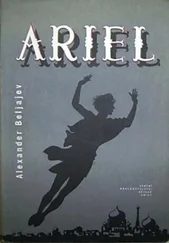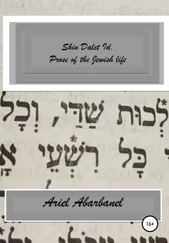Ariel Toaff - Blood Passover
Здесь есть возможность читать онлайн «Ariel Toaff - Blood Passover» весь текст электронной книги совершенно бесплатно (целиком полную версию без сокращений). В некоторых случаях можно слушать аудио, скачать через торрент в формате fb2 и присутствует краткое содержание. Жанр: Религиоведение, на английском языке. Описание произведения, (предисловие) а так же отзывы посетителей доступны на портале библиотеки ЛибКат.
- Название:Blood Passover
- Автор:
- Жанр:
- Год:неизвестен
- ISBN:нет данных
- Рейтинг книги:3 / 5. Голосов: 1
-
Избранное:Добавить в избранное
- Отзывы:
-
Ваша оценка:
- 60
- 1
- 2
- 3
- 4
- 5
Blood Passover: краткое содержание, описание и аннотация
Предлагаем к чтению аннотацию, описание, краткое содержание или предисловие (зависит от того, что написал сам автор книги «Blood Passover»). Если вы не нашли необходимую информацию о книге — напишите в комментариях, мы постараемся отыскать её.
Blood Passover — читать онлайн бесплатно полную книгу (весь текст) целиком
Ниже представлен текст книги, разбитый по страницам. Система сохранения места последней прочитанной страницы, позволяет с удобством читать онлайн бесплатно книгу «Blood Passover», без необходимости каждый раз заново искать на чём Вы остановились. Поставьте закладку, и сможете в любой момент перейти на страницу, на которой закончили чтение.
Интервал:
Закладка:
The women also had their role to play in the ritual of vilification, and their role was not one of secondary importance. Their enthusiastic participation in the display of verbal and gestural contempt during the functions of the synagogue was well known to everyone and caused no surprise. Rabbi Azriel Diena, in a ritual response sent to the heads of the Jewish community of Modena in the month of November 1534, censured the bad habits of the women, who, in the synagogue, as well as on the Sabbath and during the festivities, "when the solemn moment arrives in which the rolls of the Torah were extracted from the Ark, they rise up, as if they were infuriated, launching a barrage of insults and curses against all those whom they hated" [645] Azriel Diena, Sheelot w-teshuvot. Responsa , cit., voI. I, pp. 10-14.
. Beniamin Slonik, rabbi of Grodno in the Grand Duchy of Lithuania, in his manual of honest female behavior in the Ashkenazi communities, which was translated into Italian several times, attempted,
p. 207]
in an effort to teach them to restrain themselves and cool their burning ardor, to explain the predisposition of Jewish women to imprecate and fling endless anathemas. According to the scholarly Lithuanian, the women suddenly restrained themselves "when they curse with kalalot (anathemas), which the women are very accustomed to doing, because they cannot revenge themselves physically due to their lack of strength, and start to curse and swear at all other persons who have displeased them in some way" [646] Mizwat nashim melammedah . Precetti da esser imparati dalle donne hebree , composto per Rabbi Biniamin d'Harodono in lingua tedesca, tradotto ora di nuovo dalla detta lingua nella Volgare per Rabbi Giacob Halpron Hebreo a beneficio delle devote matrone & Donne Hebree tementi d'Iddio , Venice, Giacomo Sarzina, 1615, p. 98.
.
Even the Jewish chronicles of the Crusades, which exalted the heroism and readiness for martyrdom of German Jewish women, stressed the manner in which they disdainfully rejected "conversion to the faith of the crucified bastard ( talui mamzer )" and, showing praiseworthy courage and surprising temerity, did not hesitate to shout insults and curses at their Christian aggressors" [647] Cfr. Haberman, Sefer ghezerot Ashkenaz we-Zarf at , cit., pp. 34,38-39. For a rather vague discussion of this matter, see S. Goldin, The Ways of Jewish Martyrdom , Lod, 2002, pp. 119-121 (in Hebrew).
.
Bella, the wife of Mayer and daughter-in-law of Mosè of Würzburg, in her deposition dated 6 March 1476, recalled the women’s active participation in the contemptuous ritual allegedly performed in the synagogue of Trent during the child murder committed the year before.
The same Bella, together with Brunetta, Samuele of Nuremberg’s wife, and Anna, his daughter-in-law, Brünnlein, Angelo da Verona’s mother, Anna, Maestro Tobias's first wife, now deceased, all appeared at the threshold of the synagogue during the ceremonies to see the child’s body, which lay stretched out on the almemor . They then enthusiastically joined the ritual of imprecations, spontaneously begun by the men, waving their arms and shaking their heads as a sign of censure and spitting on the ground [648] "Et dicit se vidisse dictus corpus ut supra, dum ipsa Bella esset super hostio Synagogae, cum qua etiam aderant Bruneta, uxor Samuelis, Anna, ejus nurus, Bruneta, mater Angeli, et Anna, uxor tunc Tobiae, qua mortua est jam duobus annis vel circa. Quae omnes infrascripte mulieres et ipsa Bella illuserunt contra dictum corpus sic jacens super Almemor e, ut supra, faciendo ficas et expuendo in terram, admovendo manus et quatiendo capita sua et dicendo praedicta verba" [“…and all the above mentioned women ridiculed the body lying on the altar, ‘doing the fig’ and spitting on the ground, waving their arms and violently shaking the boy’s head and repeating the above mentioned words”], (cfr. [Bonelli], Dissertazione apologetica , cit., pp. 121-122).
.
These acts were accompanied by the ever-present scurrilous gesture of “doing the fig”, which was exalted and almost sanctified by the fact that it was being performed in a place of worship, whether a synagogue or a church. It is not, therefore, surprising that the display of those contemptuous gestures was one of the charges brought by the Holy Office of Venice against the elderly Elena Freschi (Fritschke), survivor of a poorly digested conversion to Christianity. According to the testimony of the Venetian patriarch Donna Paola Marcello, in fact, that Sunday, during Mass in the church of San Marcuola, just as the priest had started reciting the Credo, the arrogant Paduan convert "got very angry and made ugly faces and said bad words, and, among other things, I heard her say: 'You’re lying through your teeth' . And I saw her ‘do the fig’ towards the altar
p. 208]
where the priest was saying Mass [649] Cfr. loly Zorattini, Processi del S. Uffizio contro ebrei e giudaizzanti , cit., voI. I, pp. 154-155
. The clash of religions therefore occurred on several different levels simultaneously, passing from ideological diatribe, with scholarly and religious features, to sneering and curses, accompanied by codified gestures of proven and obvious effectiveness, with obscene and insolent meanings.
p. 209]
CHAPTER FIFTEEN
ISRAEL'S FINAL DEFIANCE
Israel of Brandenburg, the young Saxon painter and miniaturist who arrived at Trent on the occasion of the fateful Passover of 1475 on one of his frequent trips to the cities of the Triveneto region in search of clients, Jews and Christians, was the first to opt for a rapid conversion to Christianity. He had already successfully braved the baptismal waters by the time the interrogations of the principal persons implicated in the child murder of Simon began in late 1475. Wolfgang was given a new name selected for him by Hinderbach, in honor of a saint for whom the prince bishop of Trent showed particular affection [650] Cfr. D. Rando, Dai margini la memoria. Johannes Hinderbach (1418-1486) , Bologna, 2003, p. 398.
. As Wolfgang was to confess at a later time, he had decided to abjure the faith of his fathers simply in the hope of saving his skin [651] The podestà of Trent stated with some uncertainty "quod Wolfgangus asseruit se minorem 25 annis et licet ex aspectu videatur major annorum 28 vel circa". [“that Wolfgang said he was less then 25 years old, but you could see from his face that he was at least 28”] At an earlier date, on 21 April 1475, a record was made in the trial documents "quod Israel Hebreus, qui ad praesens in carceribus detinetur, occasione q. Simonis interfecti, desiderat effici Christianus et Baptisma suscipere; idcirco praelibatus Reverendissimus Dominus mandavit dictum Israelem de carceribus relaxari pro nunc, ita quod de Castro non exeat, ad hoc ut in fide instrui possit et deinde si visum fuerit Baptizari"[Approximately: “that Israel the Jew, who is presently being held in jail in relation to the killing of Simon, wishes to become a Christian and undergo baptism; for this reason, the Prince Bishop commands him to be released for now, as long as he doesn’t leave the castle, so that he might be instructed in the faith, and we therefore consent to his baptism”]. Israel Wolfgang later admitted that he had been baptized to escape condemnation to death, "quare ipse Wolfgangus fecit se baptizare, quia vidit se captum et dubitavit ne condemnaretur ad mortem, credens se illam evadere, ut evasit" (cfr. [Benedetto Bonelli], [“because this Wolfgang caused himself to be baptized because he saw that he had gotten caught and feared he might be sentenced to death, believing he could escape death, which in fact he did”] Dissertazione apologetica sul martirio del beato Simone da Trento nell'anno MCCCCLXXV dagli ebrei ucciso , Trent, Gianbattista Parone, 1747, pp. 138, 140, 147). In this regard, see also G. Divina, Storia del beato Simone da Trento , Trent, 1902, voI. II, pp. 78 ss.; R. Po-Chia Hsia, Trent 1475. A Ritual Murder Trial , New Haven (Conn.), 1992, pp. 95-96.
. And the circumstances proved him right. Or at least, they proved him right, at first.
Интервал:
Закладка:
Похожие книги на «Blood Passover»
Представляем Вашему вниманию похожие книги на «Blood Passover» списком для выбора. Мы отобрали схожую по названию и смыслу литературу в надежде предоставить читателям больше вариантов отыскать новые, интересные, ещё непрочитанные произведения.
Обсуждение, отзывы о книге «Blood Passover» и просто собственные мнения читателей. Оставьте ваши комментарии, напишите, что Вы думаете о произведении, его смысле или главных героях. Укажите что конкретно понравилось, а что нет, и почему Вы так считаете.












